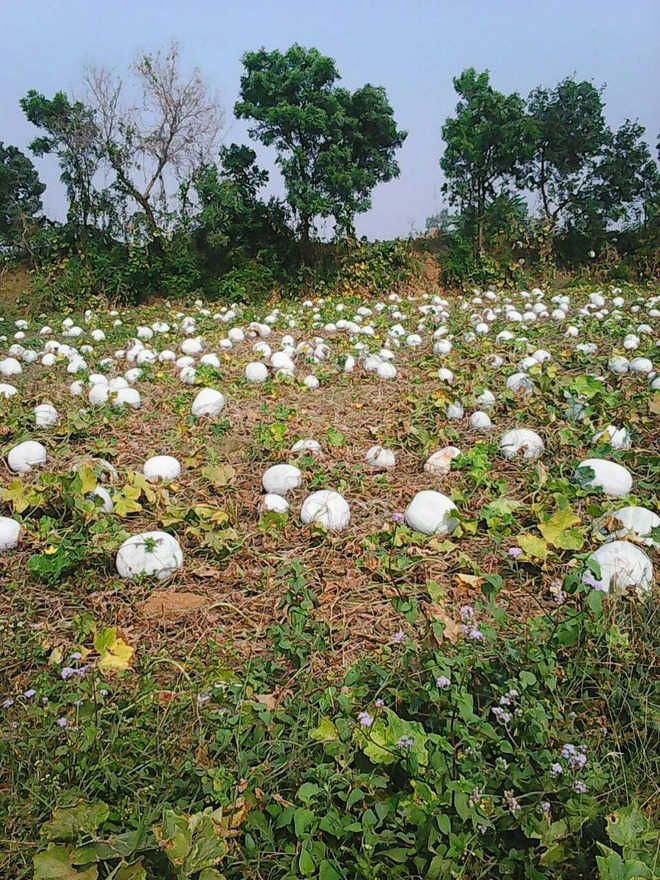Manav Mander
Tribune News Service
Ludhiana, July 2
Ash gourd can prove to be a successful alternative to maize crop since it is disliked by wild animals. It is mostly used in preparing sweets thus it will help farmers a lot. Another benefit of growing this crop is that the produce is purchased by contractors from fields itself.
Grown mainly in the kharif season under the rainfed conditions, ash gourd cultivation will be suitable in Garshankar and Mahilpur blocks of the Hoshiarpur district.
“Ash gourd is a warm season crop which grows well in temperature range of 22-35 degree Celsius. It can be grown in all types of soils, but sandy loam soil with pH of 6.5-7.5 is ideal for its cultivation,” said Dr Manmohanjit Singh, director, PAU’s Regional Research Station, Ballowal Saunkhri.
He said, “Improper cultural practices, lack of suitable varieties and susceptibility to pests and diseases result in low yield. There is a need to adopt recommended practices to get the optimum yield of ash gourd. PAU recommends PAG-3 variety for cultivation.”
Dr Prakash Mahala, assistant scientist, Regional Research Station, Ballowal Saunkhri said, “Ash gourd can be sown between February to March or June to July, however, in rainfed condition the best time is the onset of monsoon.”
He said, “Before sowing one should bring the soil to a fine tilth after 2-3 ploughing and harrowing. Sowing should be done in hills prepared on either side of the sowing channel and 2 seeds per hill should be sowed. Its nursery can also be raised in trays to ensured germination. One needs to apply 8-10 tonnes well rotten farm-yard manure either near hills or in pits.”
Hand weeding should be done within first 45 days of sowing and guide the vines after 35-45 days of sowing. Crop matures in about 120-150 days and one can harvest the fruit when it attains maturity.
Dr Singh said, “Ash gourd is mainly used in making sweets. Therefore its early cultivation coincides with festive season and it fetches higher prices. In last few years, farmers were able to earn Rs 30,000 to Rs 50,000 per acre from this crop, however, prices fluctuate every year.”
Unlock Exclusive Insights with The Tribune Premium
Take your experience further with Premium access.
Thought-provoking Opinions, Expert Analysis, In-depth Insights and other Member Only Benefits
Already a Member? Sign In Now










